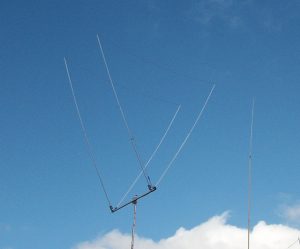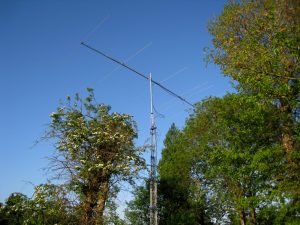A ‘Beefed-Up’ GM3SEK Mains Filter
Here’s a nice home brew project to reduce noise levels mainly on the lower HF bands and to give your mains a nice squeaky-clean input. In this article, we build 2 uprated versions of the Ian White [GM3SEK] original design which we use to feed a power hungry OM4000 HF amplifier. One filter is also fitted with an additional AC output to feed a mains transceiver or PSU. However, you can use a configuration of various output sockets to suit your own needs.
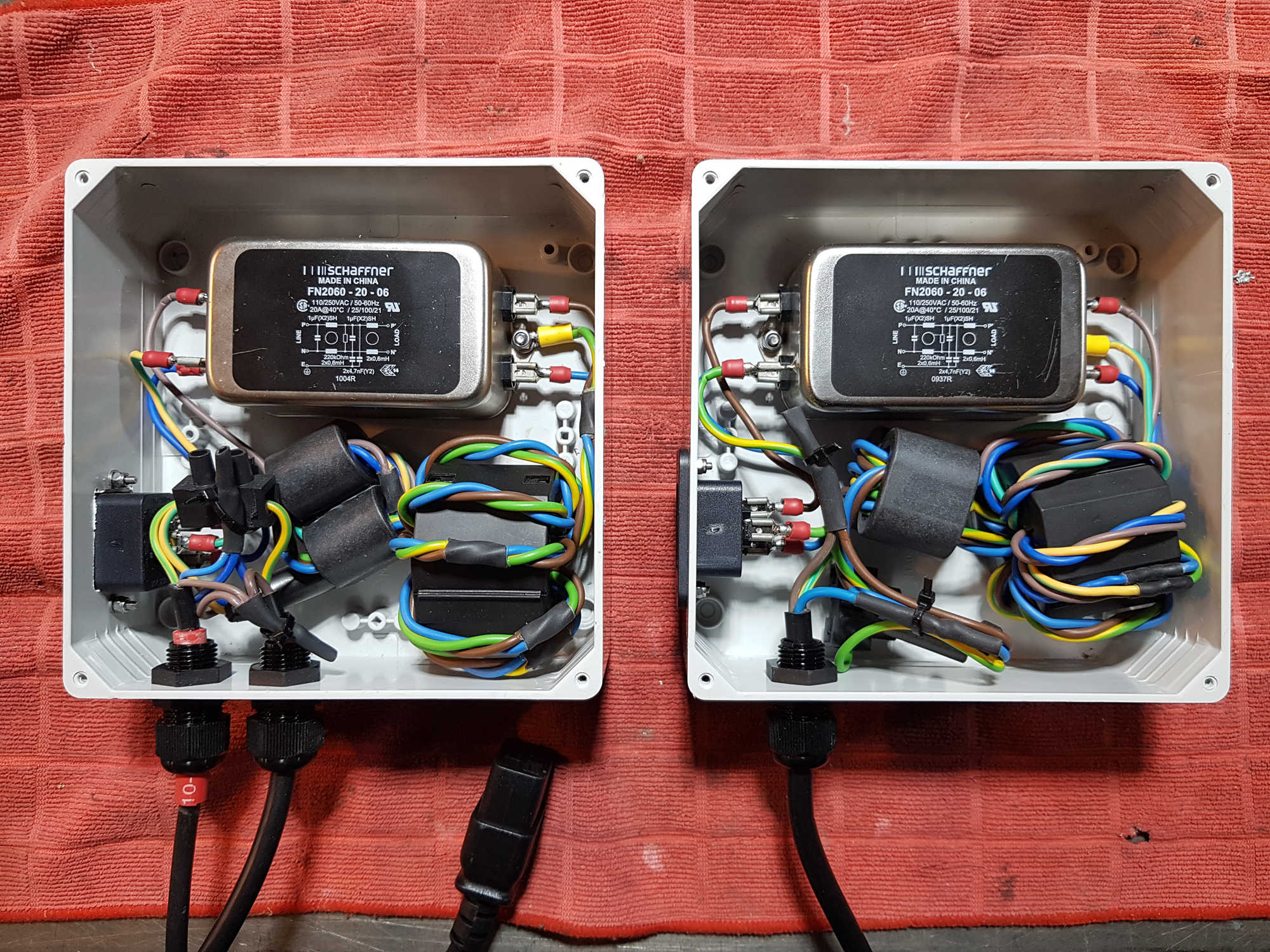
The left-hand filter includes an additional output for a mains HF Radio
I decided to fit a mains filter here in the shack a few years ago and based my design on one by Ian White GM3SEK. There’s plenty of information online relating to Ian’s design primarily on
Ian’s site here.
It’s proven and many operators have found it a really useful addition to the shack.
The points highlighted here are that it can effectively reduce received noise levels on the HF bands, particularly on lower HF like 80 and 40m. Some builders have reported excellent results with ‘QRM’ levels of S9 being reduced to S2 or 3 making an unusable band – usable again.
We’re not saying that in every shack that this will be the case, but as a matter of course it makes perfect sense to fit one. I built one a few years ago based on Ian’s design using at the heart of it, a Roxburgh RE5-F15 single section mains filter.
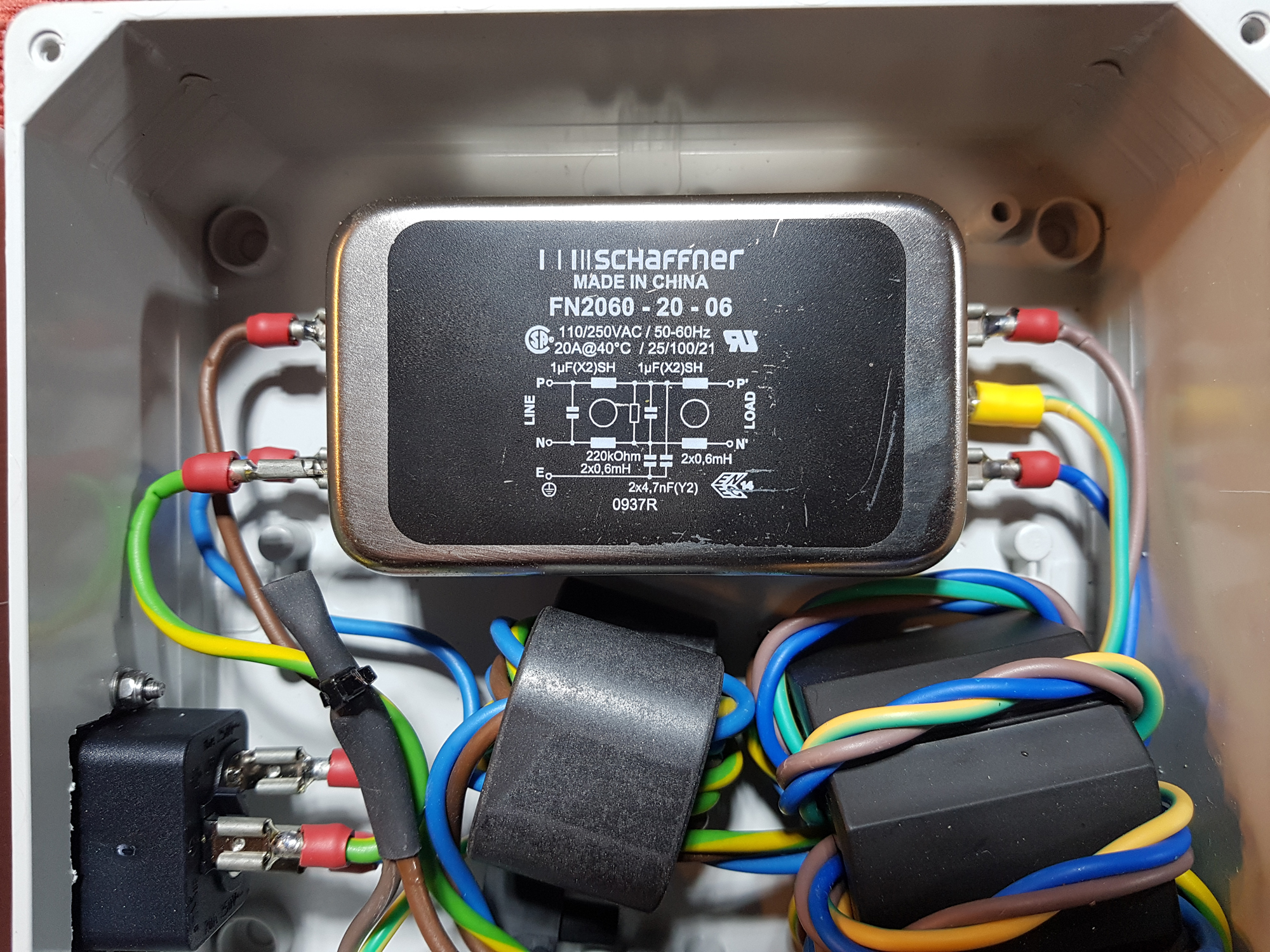
The RES5-15 is a single section filter rated 15A at 240V AC so its well rated for UK ‘Mains’. Ian’s design goes further in that he uses a very hefty Fair Rite ‘Type 31’ ferrite core in which all 3 mains cores are wrapped around the core 7 times (or 5 turns if using 2.5mm dimeter wire). This is the lower HF part of the filter, hopefully killing many of the nasties on the lower bands.
Finally, 2 smaller ‘Oval Cores’ of Type 43 material filter out the higher bands. For most users, this set up is more than adequate.
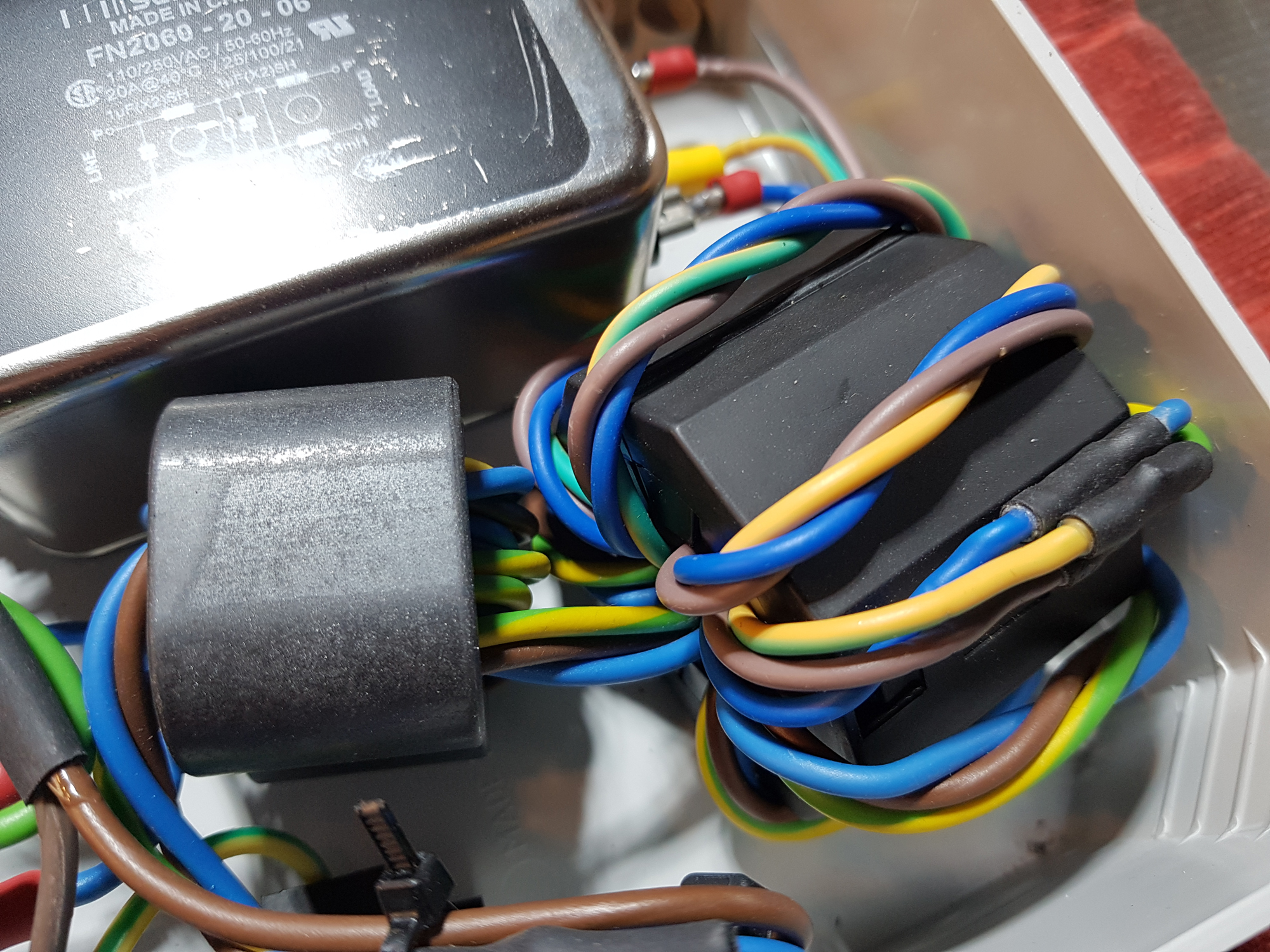
However, we’ve gone one stage further. Checking online, you can see that the RES5-15 is just one of many different types of commercially available filters. Amperage varies from a couple of amps all the way up to 50 amps and more.
Whilst we’re not looking at filtering the whole town, I looked at building 2 filters for a friend who was having issues with his OM4000 amp which kept tripping out in his shack. In testing, we brought the amp over to my QTH to run tests which are ongoing.
Whilst we obviously don’t run the exact same radio/antenna etc setup, we both run 1:1 current baluns using 2 x stacked ‘Type 52’ [or ‘K’] cores at the antenna feed point, so hopefully the feeder is free from any common-mode currents and we can rule this out.
So our question is, ‘Is RF or other [unknown] sources of interference‘ getting into to OM4000 and causing the grid trip. As my friend’s setup has no mains filtering – all we can do is build something that will [hopefully] help.
My own radio and shack inputs has a fully filtered 2 section mains filter. This is based around Ian White’s design but instead, uses a 2-section filter which adds additional filtering components with more attenuation of the unwanted products.
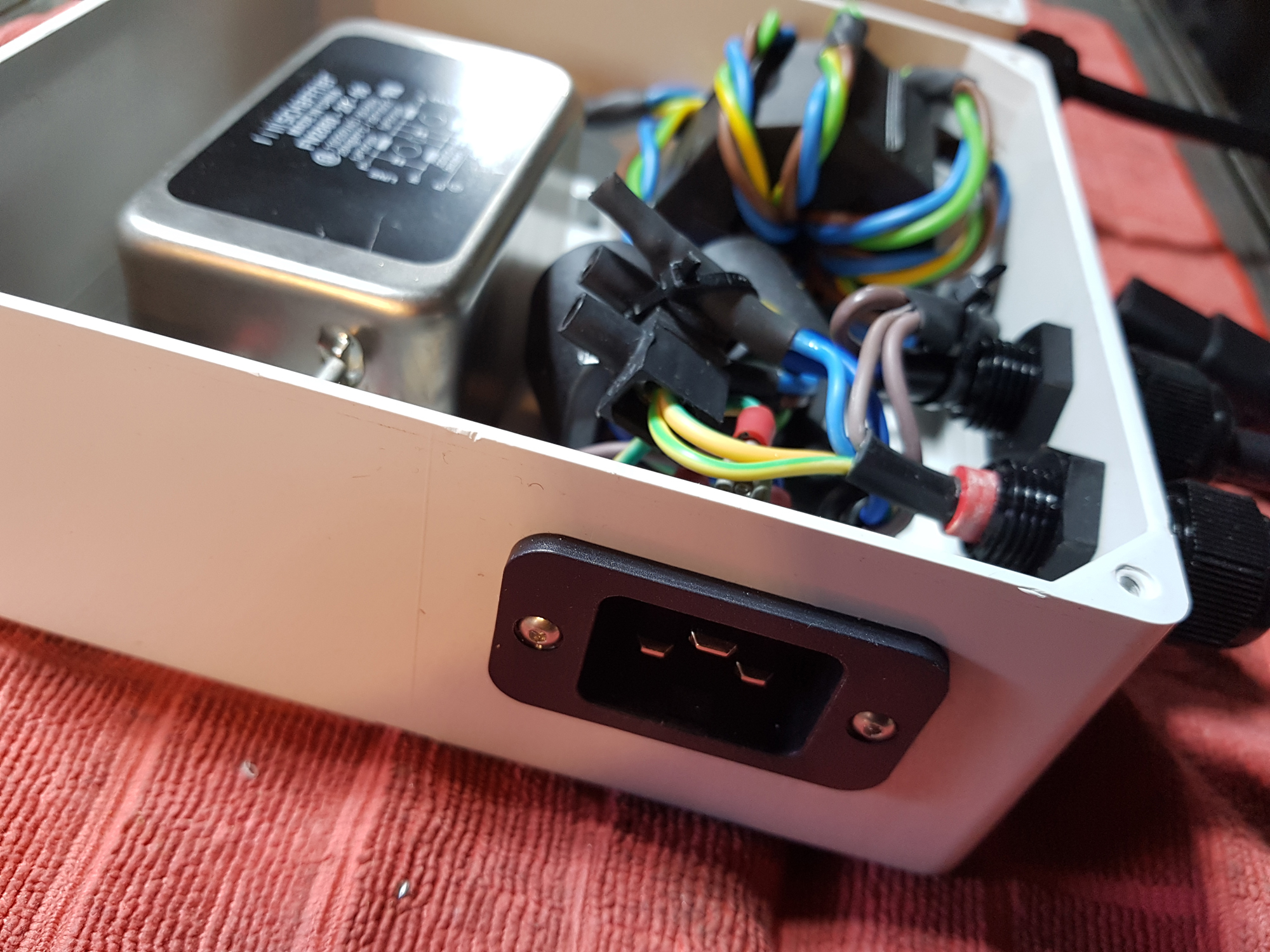
GM3SEK Build Info:
In essence, the G0UIH build is the same [as is the wiring] as the GM3SEK filter, so you can see from the current online info how to do the construction side but we use Schaffner FN2060-20–06 dual section filters which offer more attenuation that the single section filter. It’s also rated at 20A AC so has extra headroom.
Cost wise, hardware has shot up by quite a margin recently. Three years ago, I built my whole unit for about £30. Today, you’ll be looking at around £75 for the components listed below. Saying that, a good mains filter can make a noisy unworkable band useable. So, it may be well worth the expense.
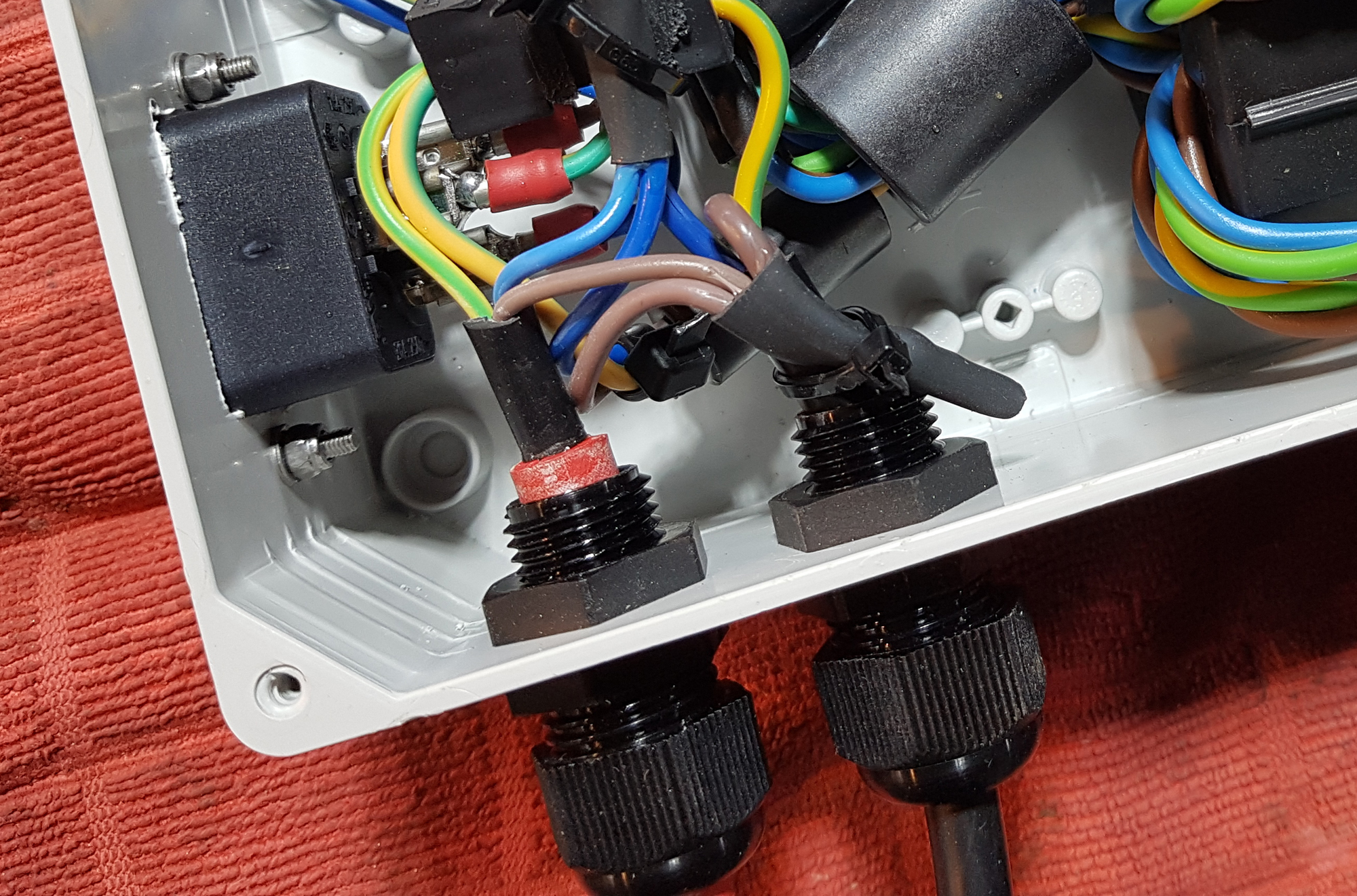
Here’s the rundown of components we used.
Schaffner FN2060-20-06 Mains 2-Section 240V AC 20A Filter, although you can use any 2-section filter rated at 240v AC at 13A or above. The FN2060 normally retails at over £60 from places like ‘RS Components’ but we found a UK seller on eBay who has quite a few used but fully working examples of them at a very respectable £19.95 each.
Type 31 Ferrite Core x1 [Fair Rite] – Known as the ‘Problem Solver’ this is a very hefty core. Wrap 7 turns of mains cable [remove outer sheath and spiral wrap using a drill/vice] around the core after the FN2060. Part number 0431177081 available at ‘Mouser’ and ‘Farnell’. For info, the image on Mouser is not representative of the actual product which is much larger.
Type 43 Oval Cores [x2] – These smaller cores are of Type 43 Material. Wrap the mains leads 3 times through the core for attenuation on the higher bands. These cores follow after the Type 31 core. Available from ‘Mouser’ or ‘Farnell’ Part number 2643167851
The Enclosure: Is a 175 x 175 x 75mm ABS enclosure from ‘Farnell’ GR17012. It allows for probably 3 outputs [we used 2 on one enclosure with ease]
IEC Sockets/Plugs/Leads: Inputs and Outputs as per your individual requirements
On the output side, Ian White has used a 4-way extension type socket which would suit most builders so you can just wire the extension to the output of the filter.
We’ve not used the same as the AC requirements for the hefty OM4000 are somewhat different.
The OM4000 uses 2 x IEC 16A sockets for the input, however they are not the normal ‘kettle’ type lead and plugs. This is a serious amp capable of 4kw and uses much heavier AC flex and an IEC C19 plug. To top it off, it uses 2 of them hence that’s why I’m building 2 independent units.
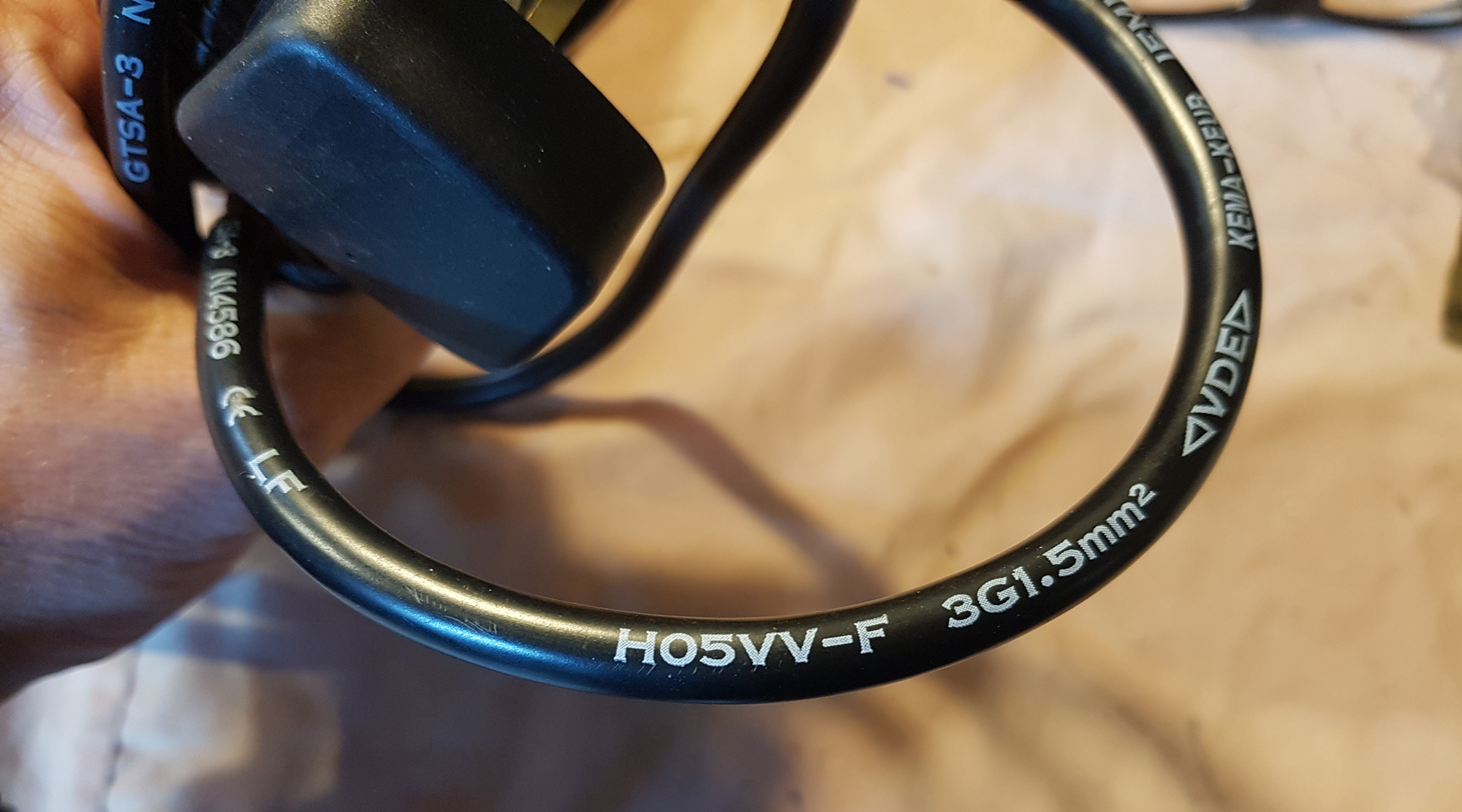
On one of the filters, I’ve included an additional 2nd fully filtered output with a standard IEC C13 plug on it. This plugs directly into the rear of the transceiver [Icom IC775DSP] which of course is mains powered so the operator now has 2 fully filtered independent outputs for his OM4000 and one for the radio.
I’m hoping the additional filtering will help as this problem is really bugging its owner.
UPDATE: January 2023
Well, unfortunately the issue seems to be with the amp rather than the mains input. Saying that, he has super squeaky clean mains input to the amplifier and to his radio. On 80 and 40m particularly on a wire antenna, I’ve noticed a fairly big drop in background QRM so the filter is doing a good job. Hopefully he can get the amp repaired :).

